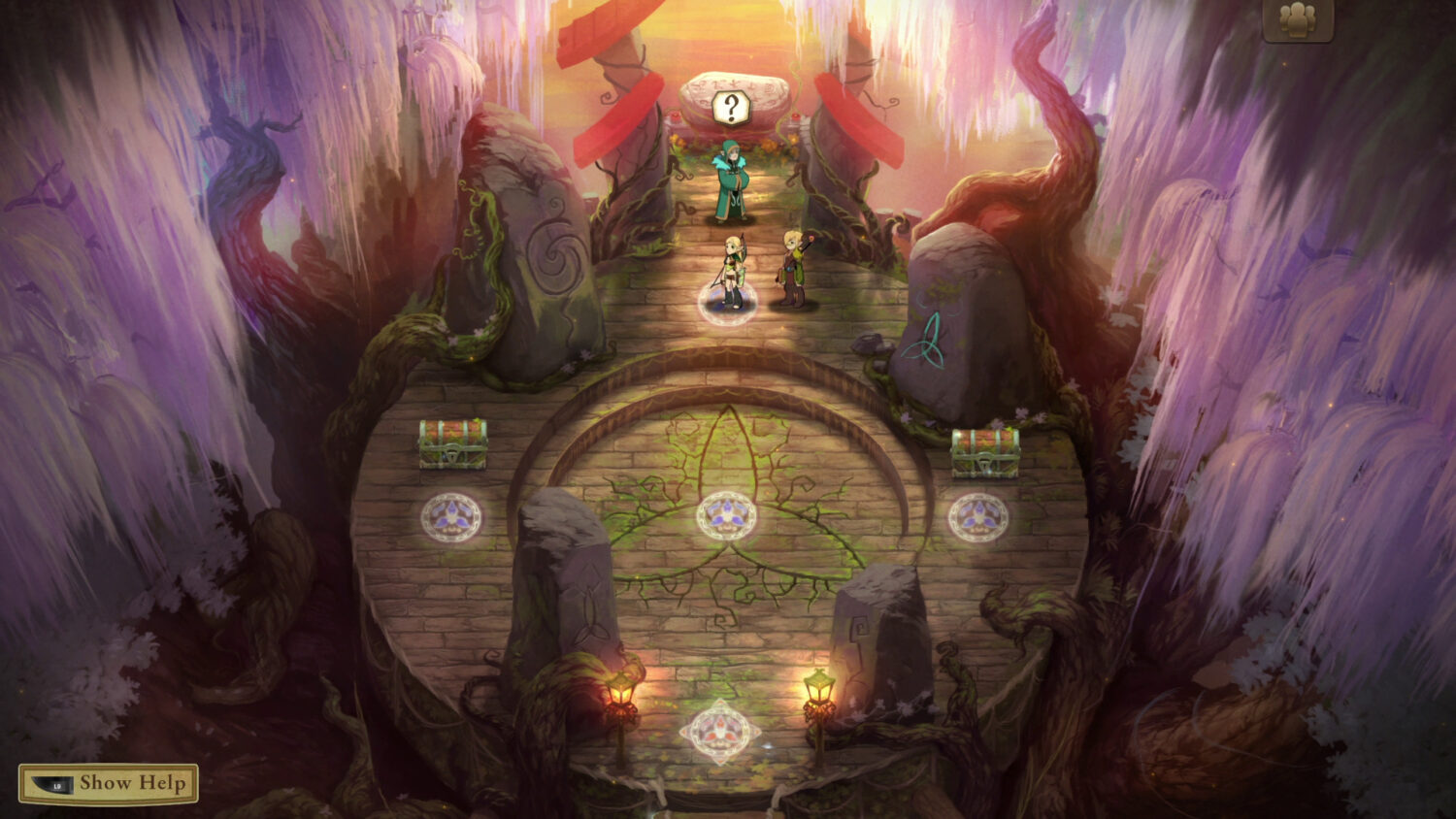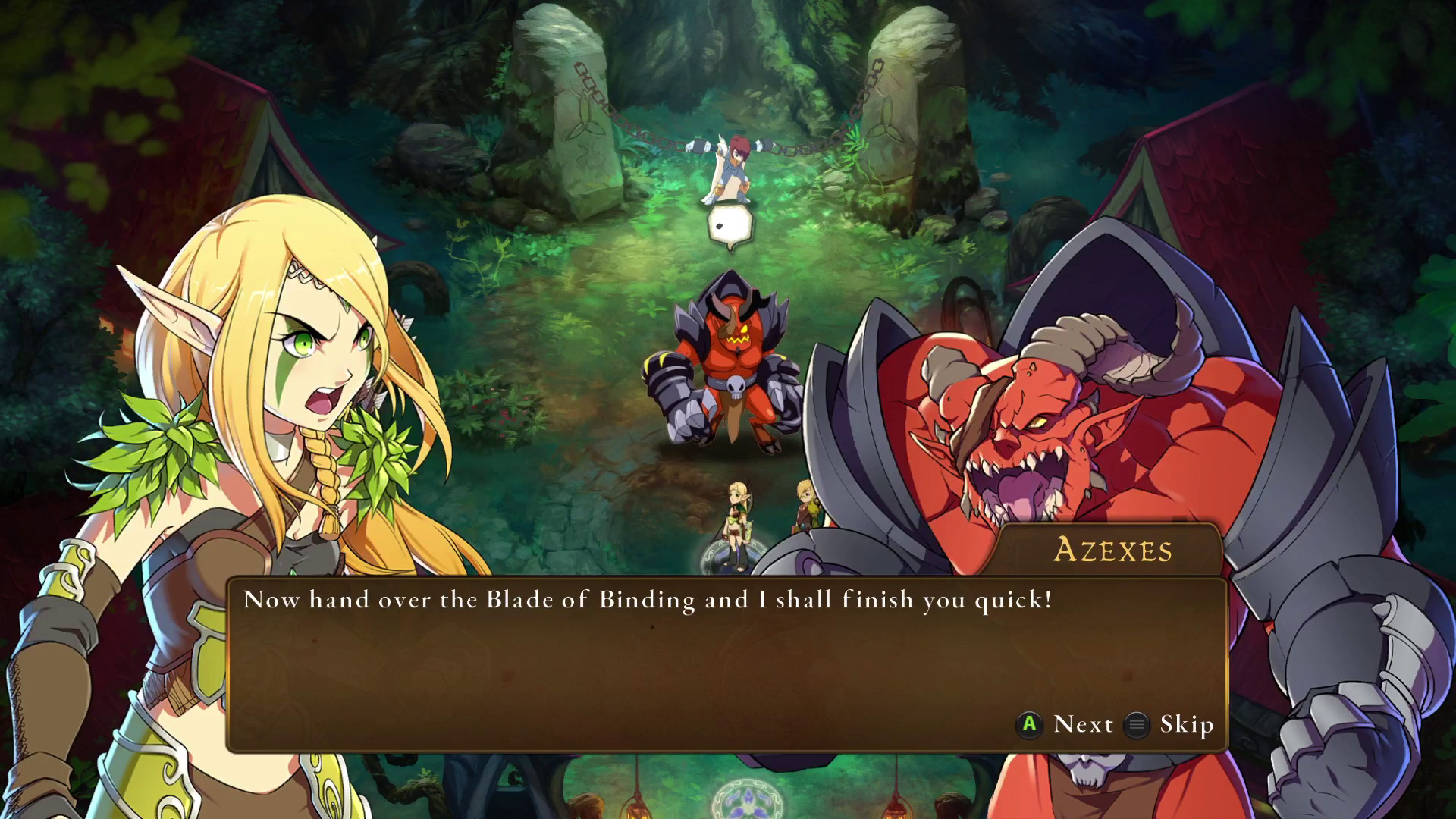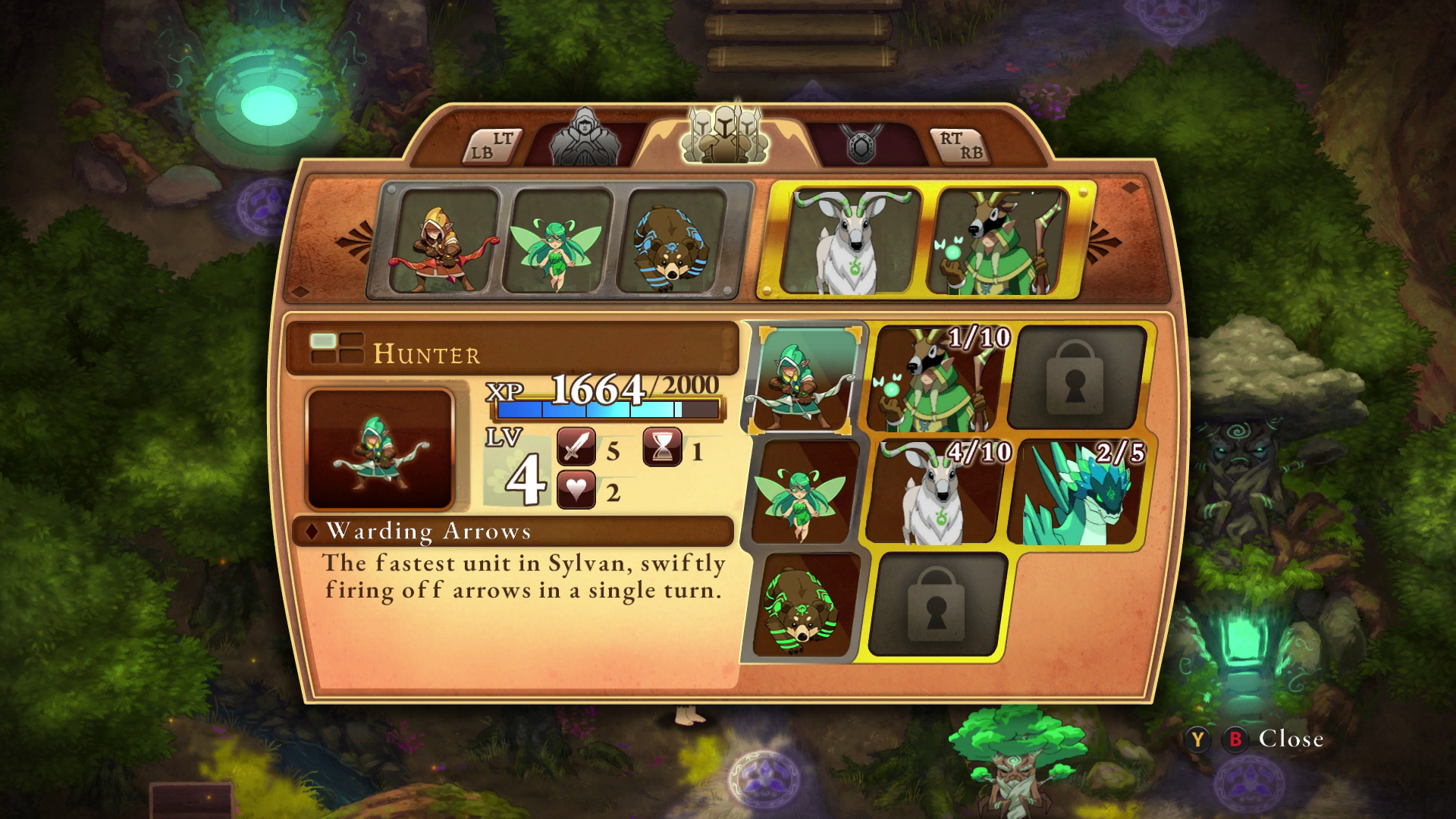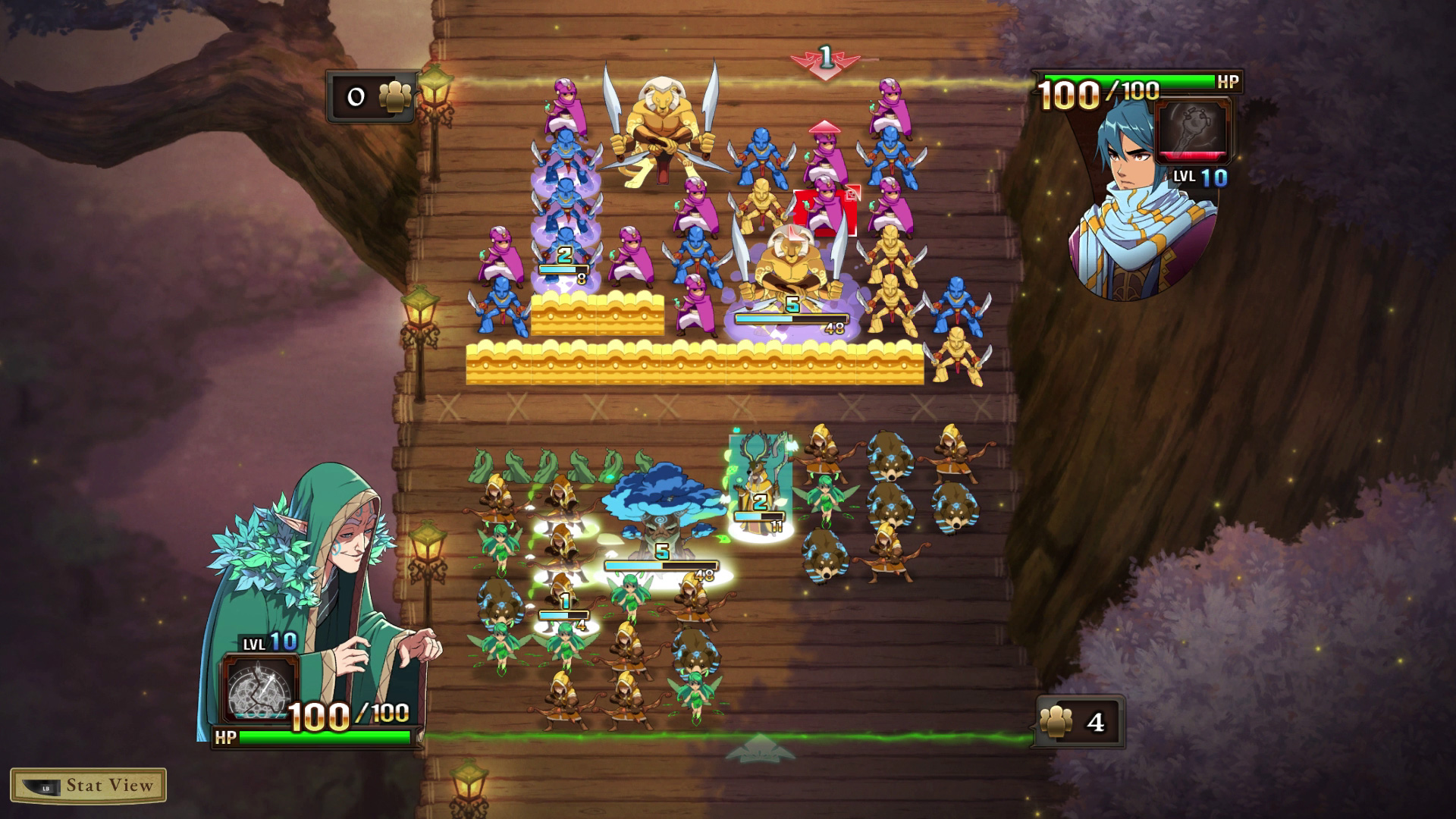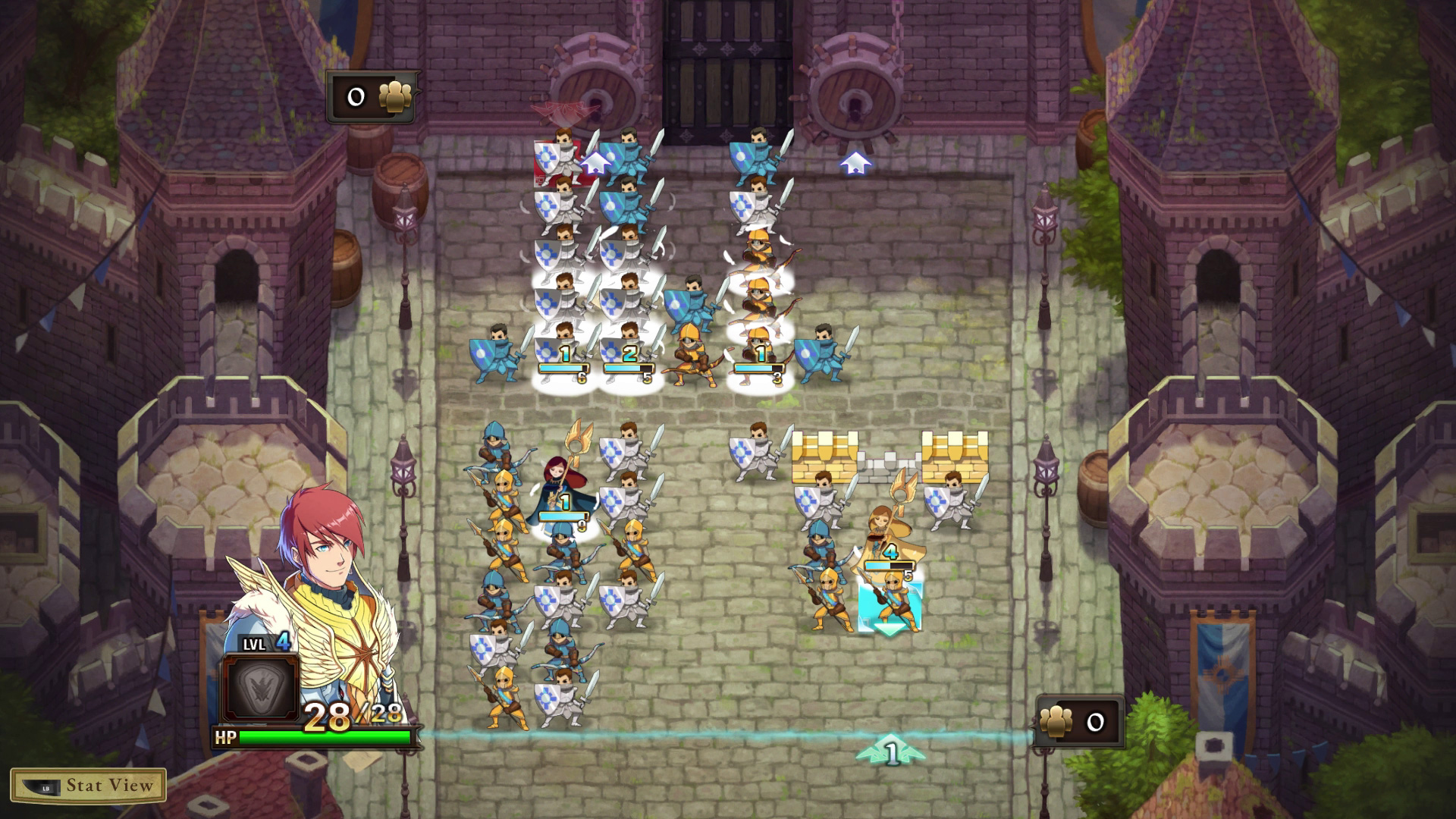Well worth a second (or third) look.
I didn’t play Might & Magic – Clash of Heroes upon its initial Nintendo DS release in 2009, but I did play (and enjoy) the 2013 iOS port. I recall not finishing it, and that was my mistake. I’ve now corrected that thanks to the Definitive Version for Nintendo Switch, and I loved every minute of it.
Well, nearly every minute of it. There remain remnants of the reason why I didn’t finish it a decade ago. Shall we proceed?
Might & Magic – Clash of Heroes: Definitive Edition is a puzzle RPG based on the Might & Magic franchise that dates all the way back to 1986. Clash of Heroes does tie into the series; it’s a prequel to Heroes of Might & Magic V. However, its color-matching puzzle mechanics vary distinctly from the main series’ focus on tactical turn-based combat. As such, you need no knowledge of traditional Might & Magic lore or mechanics.
Clash of Heroes focuses on five different characters, each of whom is embroiled in a demonic plot to take over the kingdom of Ashen. The story begins with a surprise attack that turns the various regions against one another. Each playable character, in turn, must figure out what’s going on and then level up to the point where he or she can mount an effective counter offensive.
By handling one hero at a time, the narrative basically becomes five separate stories. This isn’t great for the narrative, but it makes sense from a gameplay perspective. Clash of Heroes begins each encounter by randomly dropping the soldiers of two armies on a split field. Your army is on the bottom facing the enemy at the top. Your soldiers consist of various grunts and higher-powered elite units, all of which are acquired either through story progression or via purchase with your in-game rewards. You can place up to three different grunt types and two elite types on the field at once, allowing up to five different units. But you don’t always want to do that.
Combat, you see, is based on aligning the units to initiate attacks (vertical) or to convert them to defensive walls (horizontal). The grunts must match not only in unit type, but in color. So, the more unit variations you have, the less likely it is you’ll get matches. The elite units can’t be matched horizontally, but they can be combined vertically with any grunt unit with a matching color.
Still with me? Because it gets a bit more complicated. You get a limited number of action points to align your units, but you can gain more in certain ways. Removing a unit to collapse the line into a defensive wall, for example, can get you that action point back. Connect more than one chain in a single move and you’re awarded additional action points. It’s a lot to consider, especially when you’re weighing whether to defend against a pending enemy attack or to hurry up and launch attacks of your own.
You’ll also want to keep looking ahead, as basic attacks will rarely get you a win. The goal with the attacks is to hit the enemy’s line behind its soldiers, but your opponent also has walls and units in the way that will weaken your attack. It’s therefore important to chain your attacks by having similarly colored units attack at the same time. This is tricky, because different unit types attack at different speeds. An elite unit in Anwen’s story may take four turns to attack after alignment, while the basic archer grunts only take two. So, you’ll need to wait a couple turns to align the archers, but leaving them as single units makes them vulnerable to enemy attacks.
No matter how solid your strategies and timing are, battles will often come down to luck. As you lose armies to attacks (the opponent’s and your own), your stock of replacements increases. You use an action point to call them in, but you have no control over what you get or where they come in. As such, they’ll often block units you planned to align. They could also inadvertently create walls, thereby removing units from the battlefield that you planned to use for attacks.
Of course, it always seemed the enemy got perfect draws when summoning more units. How convenient that three blue units dropped right on top of the blue elite unit that requires four grunts for an attack. Did I ever get that kind of luck? It sure didn’t seem like it, but I admit it’s easier to remember the bad stuff.
If Might & Magic: Clash of Heroes was just about this puzzle mechanic, it’d be nothing more than a decent casual game. But the heroes and their units require leveling up and using artifact bonuses in the grand RPG tradition. This also means grinding, as there are numerous unfair difficulty spikes as you progress. Completing the side missions in the proper order certainly helps, but each chapter also has random encounters you’ll need to engage in order to prepare for what’s to come.
You’d think these battles would become repetitive, but that’s not the case thanks to two smart development decisions. First, each hero has different abilities and elite unit types that make you relearn how to be effective in combat. As such, each chapter requires a slight strategy shift. Second, not every battle is about simply penetrating the enemy’s defenses. Some require you to simultaneously attack specific objects, for example.
One required me to push three enemies backwards until they fell off a cliff. One boss had a nasty habit of turning my unchained units into food, which he would then inhale to restore his health. The best defense against this was to chain up my soldiers or sacrifice them to get them off the battlefield. Then, there are numerous puzzle challenges in which you must figure out the precise progression to eliminate all of the enemies units in a single turn.
It’s a lot packed into one puzzle RPG, and it’s all wonderful. That includes the graphics and audio, which feature storyboarded animations with a live narrator. These are quick enough to not slow things down, and they do a good job of adding some dramatic weight to the proceedings.
Put aside my frustration with the anger-inducing random unit drops, and you’ve got a nearly perfect time-killer in Might & Magic – Clash of Heroes. Whether you’re playing at home or on the go, it’s fun. Whether a battle takes two minutes or ten, it’s fun. Whether you’re on chapter one or five, it’s fun. Whether you’re playing in story mode or online in competitive multiplayer, it’s fun. The game’s heavy reliance on RPG strategies and random luck will likely frustrate casual puzzle gamers, but once it clicks, you’ll want to see it through…even if it took a couple releases to do so.
Review: Might & Magic – Clash of Heroes: Definitive Edition (Nintendo Switch)
Great
Might & Magic – Clash of Heroes: Definitive Edition’s nearly perfect combination of puzzle and RPG elements make for engrossing gameplay that’s only occasionally hampered by frustration with the components that involve random luck. Whether this is your first playthrough or a double (or even triple) dip, it’s not to be missed.

